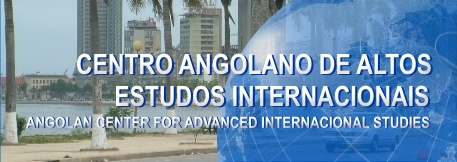![]()
|
|
 |
|
|
|
|
|
|
|
|
|
|
THE PROVINCE
OF HUÍLA
The Huilana people are divided into six ethniclinguistic groups: the Nyaneka, Nkhwnbi, Umbundo, Nganguela, Cokwé (Quioco), Herero, non-Bantu. In the north of the province, Caconda, Caluquembe, Chicomba and Chipindo the same version of the Umbundu language is spoken, although there are certain regional differences.
However, the most widely-spoken language in the province is
Olunyaneca-Nkwnbi.
In 2 December 1901 the new district of Huila was created asa consequence of the division of the district of Moçâmedes, with head-quarters in Lubango that reached the category of village by an edict, getting the name of Vila de Sá da Bandeira – paying tribute to the man that did so much for the settlement of the Southern regions of Angola. Sá da Bandeira, the capital of Huila, became city in 31 March 1923 when the railway road got at last to the Tableland after crossing the desert and the Chela mountains.
The
European colonisation area was formed by a range of 60 km having its centre
in Chibia colony.
. It as also formed by the countries of Humpata, Lubamgo and Huila. The Huila Tableland, highly wooded, is one of the most picturesque areas of all South and perhaps of all Angola because of its furrows of natural fissures and little basins where one can find roads that link the villages and where the water flows frenetically to the main rivers during the rain season.
Agriculture was the first purpose of Sá da Bandeira and wheat became the biggest production. Step by step, the settler observed that due to the poverty of the soil, agriculture could not be practiced without fertilisers. So, it became evident that to own cattle was more important that to own lands. To the primitive settlers of Madeira were given by the government, working cattle. The natives, traditionally breeders and owners of big herds continued however to be the forming basis of the district.
Metallurgy, footwear, lard, sausage industry, ceramics, woods and soft drinks became important. The arquitect’s João António de Aguiar Urbanisation Plan was the biggest responsible for the geometrical form that the city shows. Outside the circulation area of the city, in its Western extreme there is the green space that corresponds to the “Parque da Senhora do Monte” (Park of the Hill Lady), one of the main symbols of the city. In the Tableland relief of all the chain mountains, there are many waterfalls from the rapids of Tunda-Vala, a few km from Lubango, to the waterfall of Huila just near the village with that name, including the Zoo Technical Station to the South and also Hunguéria. One can find everywhere whispering water falling from slopes and forming little and picturesque foamy water tables. The great number of waterfalls forms the landscape that surrounds Sá da Bandeira. But the most photographed places are perhaps presently, the fissure of Tunda-Vala and the Leba Hill with its incredible asphalt spiral. Further on there are the great waterfalls of Ruacaná where all the Cunene torrent falls suddenly into a geological fissure of more than 100 m of depth with an incredible intensity. To get to Ruacaná waterfalls, one needs to cross the Donguena region and then cross by difficult land, the sand rivers that run beside the Cunene. In this animal paradise abounds hunt. The sands of the dry little rivers have marks of wild animals and of the great herbivores, showing a prodigious, savage and primitive life. And if the South is rich in animal species it is not less from the ethnographic point of view. Since the primitive Bochiman, one of the most primitive examples of human species, to the Mu-huila shepherd and the Ovampo warrior, Huila is an exceptional interesting field for anthropologists and ethnographers.
In this animal paradise abounds hunt. The sands of the dry little rivers have marks of wild animals and of the great herbivores, showing a prodigious, savage and primitive life. And if the South is rich in animal species it is not less from the ethnographic point of view. Since the primitive Bochiman, one of the most primitive examples of human species, to the Mu-huila shepherd and the Ovampo warrior, Huila is an exceptional interesting field for anthropologists and ethnographers. Beyond the kindness of its climate, the city has another proposal: centre of teaching. Sá da Bandeira has recovers after Independence its primitive name of Lubango and one may consider it today the less afflicted Angolan city during the years of war, keeping its economic and social basis rather stabilised and its great tendency for tourism.
Nature Reserves Guelengue e Dongo Forest Reserve: This reserve has an area of 1,200 km2 and it is flanked on its northem border by the River Chicusse, to the east by the Rivers Chissanda and Cusso, to the south by the River Cussuvo, and to the west by the River Cunene.
|
The province has a long list of interesting buildings, such as the Mandume School Building, ex. Liceu Diogo Cão, the Colégio Paula Frassinete building, built by the Dorotheian nuns in 1938, the Tchivinguiro school and tbe AI. meida farnily house. Ali of these buildings belong to the period between 1885 and 1938. The province of Huila has several old churches, among which are the following: The Sé Catedral Church (Cathedral) (1939), the Chapel of Nossa Senhora do Monte (1919), the Monumento Cristo Rei (Christ the King Monument) at Ponta do Lubango (1945/1950), a Tchivinguiro Church (1892) and the Quihita Church (1894). There are also several interesting forts and prisons built by the colonial power were placed along the line of penetration into the territory, formed by the River Caculevar and the Cunene Hydrographic basin, the aim being to guarantee peace and security to the colonies which they set up.
There are four sports clubs in Huila, three sports centres, a
young entrepreneurs club, the Commercial, Industrial and Agricultural/Farming
Association (APCIL) plus hotelling associations.
|
|
|